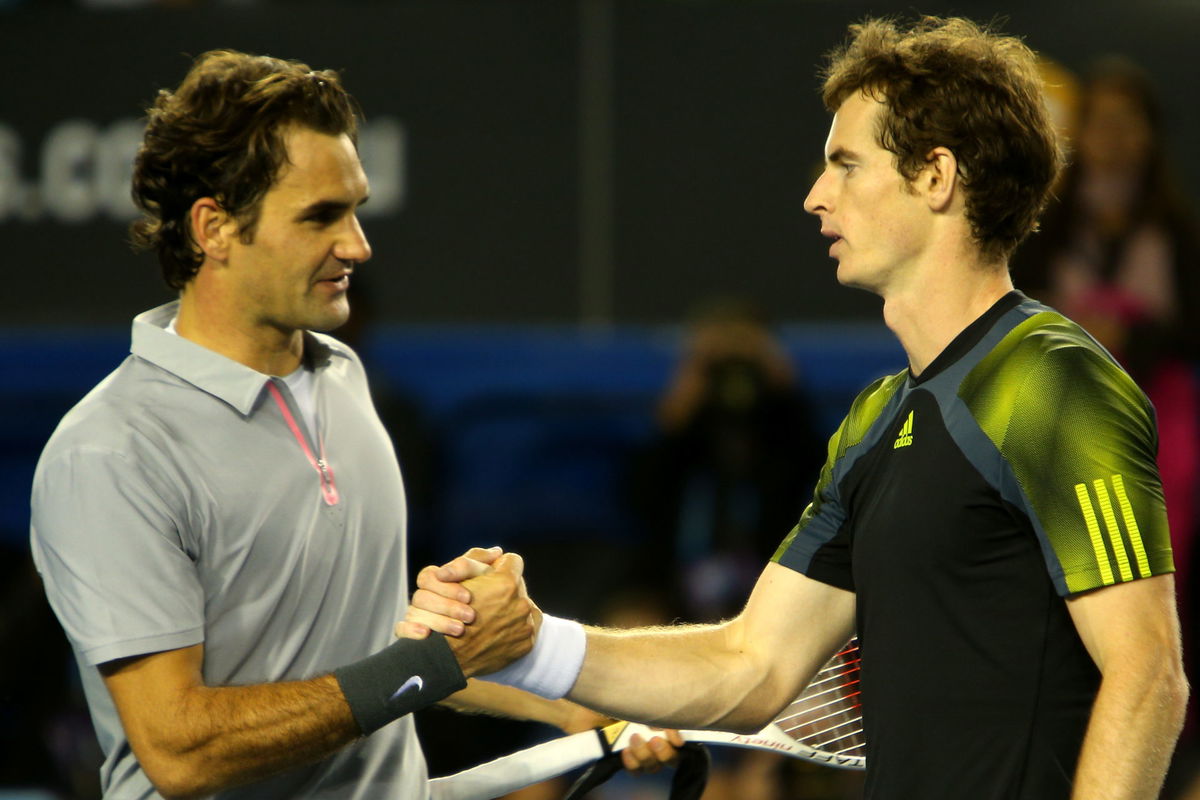
Getty
MELBOURNE, AUSTRALIA – JANUARY 25: Andy Murray of Great Britain shakes hands with Roger Federer of Switzerland after Murray won their semifinal match during day twelve of the 2013 Australian Open at Melbourne Park on January 25, 2013 in Melbourne, Australia. (Photo by Robert Prezioso/Getty Images)

Getty
MELBOURNE, AUSTRALIA – JANUARY 25: Andy Murray of Great Britain shakes hands with Roger Federer of Switzerland after Murray won their semifinal match during day twelve of the 2013 Australian Open at Melbourne Park on January 25, 2013 in Melbourne, Australia. (Photo by Robert Prezioso/Getty Images)
Former Serbian tennis star Janko Tipsarevic has weighed in on where he thinks the game has evolved from the time he started playing to the present day.
Watch What’s Trending Now!
The soft-spoken Serb, who reached a career-high ranking of No.8 on April 2, 2012, and finished with four career Tour titles, drew a parallel between the Big 4 and the stalwarts before he burst on the scene to explain how the game has changed from his playing days.
ADVERTISEMENT
Janko Tipsarevic says Roger Federer, Rafael Nadal, Novak Djokovic and Andy Murray score over yesteryear greats with their superior court mobility
Tipsarevic said court mobility is one significant aspect where the game has evolved by leaps and bounds. He said Pete Sampras, Andre Agassi and Goran Ivanisevic, who were among the top names in the game before he started out, generated as much power on their groundstrokes as they did on their serves.
However, the Serb added that what sets the Big 4 – nickname for Roger Federer, Rafael Nadal, Novak Djokovic and Andy Murray – apart is their superior court mobility and coverage.
Top Stories
Carlos Alcaraz’s Ex-Coach Breaks Silence on the Spaniard Days After Shocking Split
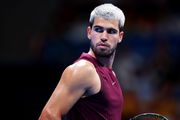
Carlos Alcaraz’s Decision to Sack Juan Carlos Ferrero Over Money Deemed “Ridiculous” by Former Pro
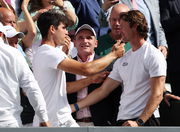
Rafael Nadal Returns to Tour With a Surprising Twist for Rising Stars

Iga Swiatek Opens Up About Financial Struggles and ‘Stressful’ Conditions During Her Childhood
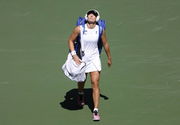
3x Grand Slam Champion Confirms Australian Open Return at 41 After Shocking Comeback
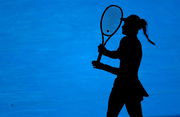
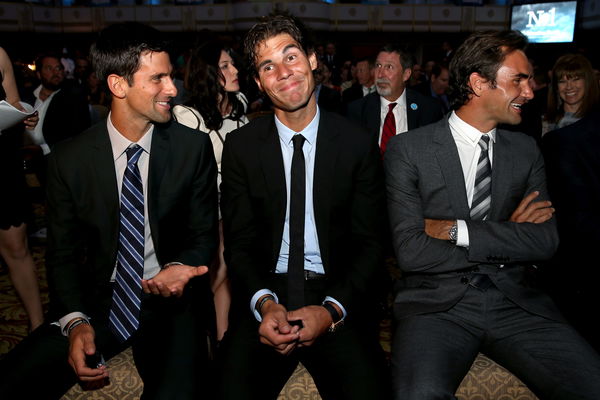
Getty
Novak Djokovic of Serbia, Rafael Nadal of Spain, and Roger Federer of Switzerlan wait to go on stage during the ATP Heritage Celebration at The Waldorf=Astoria on in New York City. (Photo by Matthew Stockman/Getty Images)
Appearing on a podcast, Tipsarevic said Sampras, Agassi, Ivanisevic, and the other doyens of the men’s game before his time represented the “actual movement on court”.
ADVERTISEMENT
“Guys before the champions that emerged, like Goran, Sampras and Agassi, they could hit the ball very hard. They could serve as hard as the guys are serving right now,” said the 36-year-old, who runs a tennis academy in his homeland.
ADVERTISEMENT
However, he added that there has been a noticeable difference in the “biomechanics of movement on court” ever since.
And it is in the manner of their court movement that the Big 4 has led the line all these years, the Serb remarked.
“…the way how they (Big 4) were covering the court, from all aspects, 3-4 meters behind the baseline and 2 meters inside the baseline is just a completely different level than what was happening before,” Tipsarevic said.
ADVERTISEMENT
ADVERTISEMENT
Read More: “Not a Tennis Player at Home”: Roger Federer Reveals His Leisure Activities
He added that because of the relatively slower surfaces in the present day, a new breed of big-hitting players has emerged who set their own pace with their power-packed tennis.
ADVERTISEMENT
ADVERTISEMENT
ADVERTISEMENT

